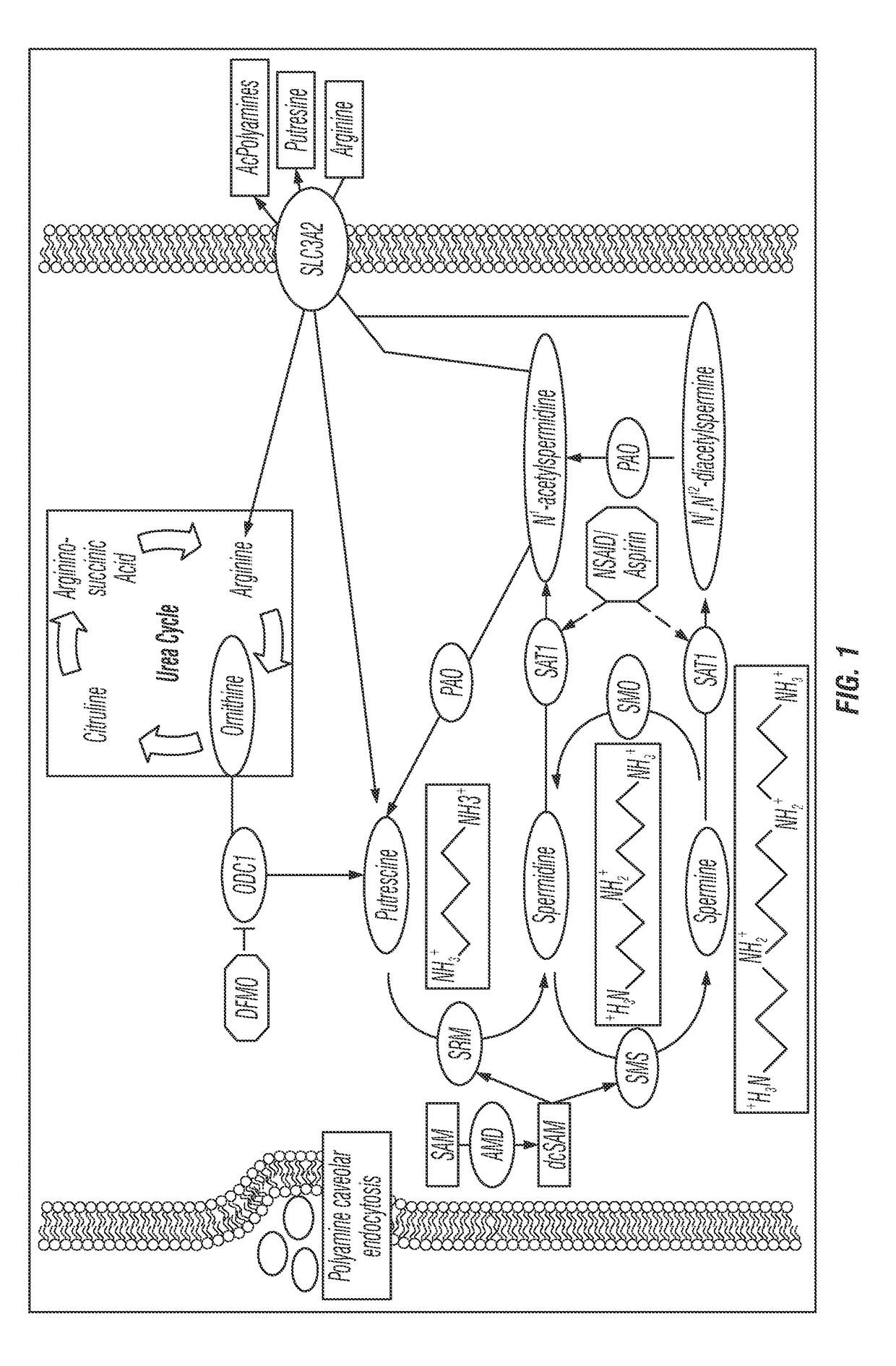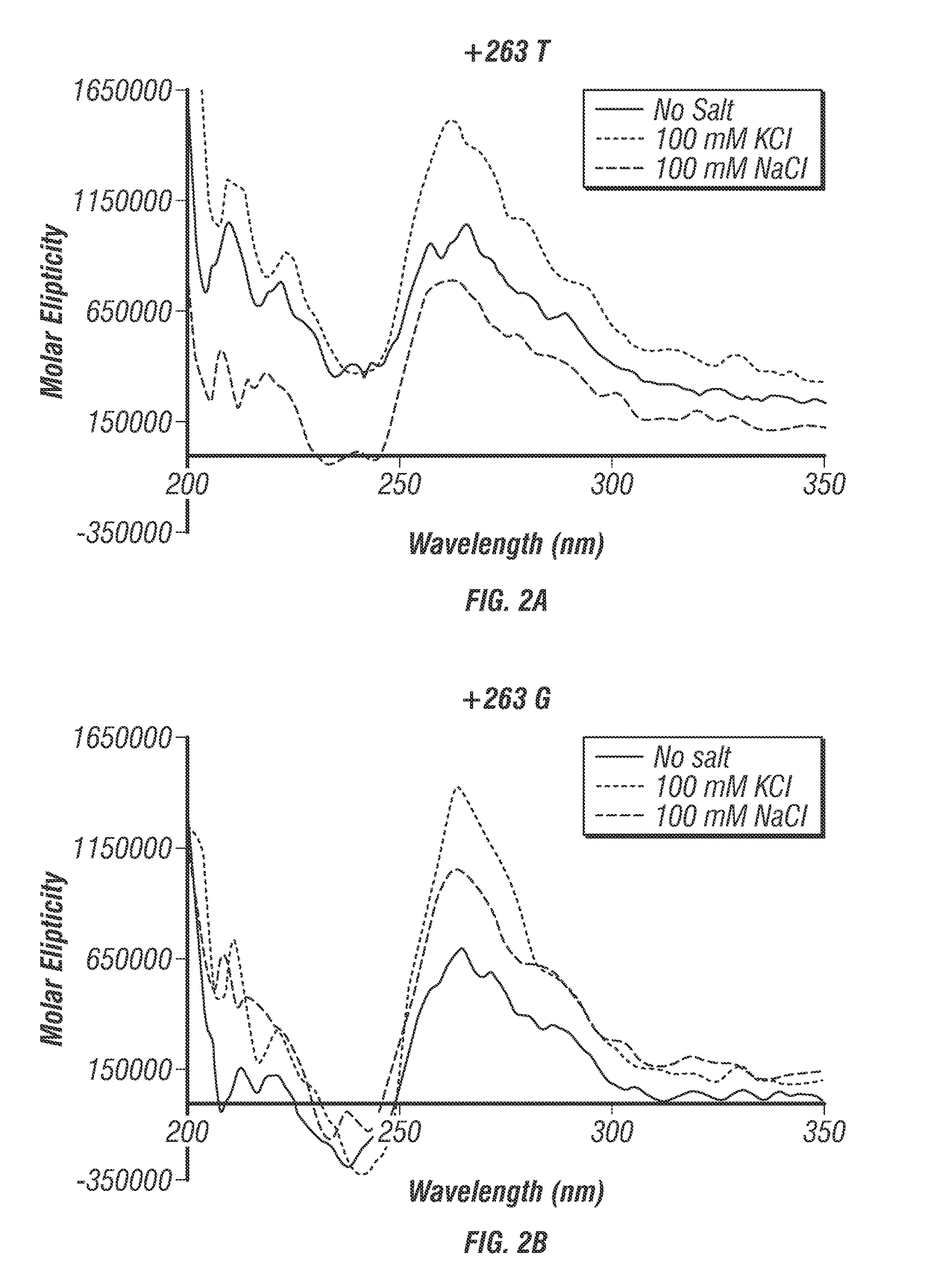Carcinoma diagnosis and treatment based on odc1 genotype
- Summary
- Abstract
- Description
- Claims
- Application Information
AI Technical Summary
Benefits of technology
Problems solved by technology
Method used
Image
Examples
example 1
l Consequence of Genetic Variability in a G-Quadruplex Structure in the Ornithine Decarboxylase (ODC1) Gene
[0214]The ODC1 promoter region contains multiple sequences that allow for transcriptional control in response to hormones, growth factors, and tumor promoters, such as enhancer (E)-boxes, cAMP response elements, CAAT and LSF motifs, AP-1 and AP-2 sites, GC-rich Sp1 / Sp3 binding sites, WT1, and a TATA box (Pegg, 2006). ODC1 has three MYC-binding elements (E-boxes) in the region from −400 to +400 bp relative to the transcription start site (TSS). Polyamine-induced nuclear c-MYC interacts with MAX, and this complex binds to E-box sequence (CACGTG) to activate transcription of target genes, such as ODC1, thus accelerating polyamine biosynthesis (Kumar et al., 2009). The transcriptional repressor MAD1 / MAX also binds to these elements to regulate the transcription level of ODC1 in proliferative cells (Pegg, 2006; Nilsson et al., 2004).
[0215]Although polyamine metabolism is a validated...
example 2
Polymorphisms Cooperate to Modulate ODC1 Transcriptional Promoter Activity and Risk of Colorectal Adenomas
[0233]Herein, the genetic variability of the ODC1 +263 SNP is functionally analyzed. The G-to-T transversion at this position is able to modulate both the stability of a G-quadruplex DNA secondary structure and an Sp1 binding site to functionally modulate the transcription of ODC1 (see Example 1). The functional contribution of this SNP, both individually and with the previously studied ODC1 +316 SNP, is studied, as well as its relationship with phenotype. Both SNPs determined limited common haplotypes, which are the most frequent among participants of the colorectal chemoprevention trial. The ODC1 +263 SNP, but not ODC1 +316 SNP or any diplotype, is able to predict putrescine levels in participants of the DFMO / sulindac clinical trial, which further validates its functionality. The ODC1 +263 TT genotype is associated with higher polyamine levels and better response to DFMO / sulin...
PUM
| Property | Measurement | Unit |
|---|---|---|
| Selectivity | aaaaa | aaaaa |
Abstract
Description
Claims
Application Information
 Login to View More
Login to View More - R&D
- Intellectual Property
- Life Sciences
- Materials
- Tech Scout
- Unparalleled Data Quality
- Higher Quality Content
- 60% Fewer Hallucinations
Browse by: Latest US Patents, China's latest patents, Technical Efficacy Thesaurus, Application Domain, Technology Topic, Popular Technical Reports.
© 2025 PatSnap. All rights reserved.Legal|Privacy policy|Modern Slavery Act Transparency Statement|Sitemap|About US| Contact US: help@patsnap.com



